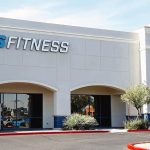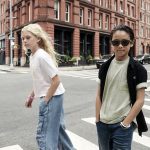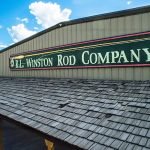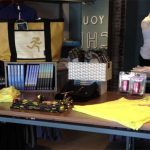Thanksgiving week and Black Friday weekend were not as strong as many retailers had hoped this year, especially when looking at outdoor equipment, apparel and footwear. Outdoor and snow sports specialty retailers that spoke with The B.O.S.S. Report said that the only items that showed any real sales gains were door-buster items designed to get crowds into a store. The only problem was that consumers did not stray far from those items, and when those items disappeared, so did the crowds.
Unseasonably warm weather across much of the East hurt sales after a strong October. But many retailers said they remain on track to grow their profits over November a year ago when panic selling cut deeply into margins. Sales growth, as usual, will hinge more on the weather than the economy. After unseasonably cool weather propelled industry sales in the low- to mid-teens in October, traffic nearly stalled at many stores in November, which ended warmer than normal-particularly in the Northeast.
According to retail point-of-sales data covering the sporting goods market compiled by SportScanInfo, sales of Outdoor Equipment, Apparel and Footwear in the chain retailer, Internet and volume retailer segments were down in the low-single digits for the month of November, with Thanksgiving week sales trending down in the high-single digits.
Overall comp stores sales reported by large national retail chains last week fell far short of forecast. Thomson Reuters, for instance, reported overall sales at the retailers it tracks rose just 0.5% over last year’s anemic November sales, well below its forecast of 2.1%.
Cyber analytics firm Hitwise reported that overall traffic at 500 retail websites it tracks decreased a whopping 15% from last year on Thanksgiving Day and 9% on Black Friday and Cyber Monday, but the performance varied widely. On Cyber Monday, for instance, Web-only retailers saw visits rise 3%, while visits to brick-and-mortar sites fell 9% and visits to catalog/call center sites tumbled 22%. Traffic surged to sites that aggregate Black Friday coupons and circulars; indicating consumers are harnessing the Web to ferret out the best deals.
Retailers seem to be countering by trying to extend the holiday shopping season. Some national retailers offered their Black Friday pricing on Web orders or opened their brick-and-mortar stores on Thanksgiving Day.
“Certainly a lot of sites did very well,” said Matt Tatham, a spokesman for Hitwise. “The bigger sites are eating away at smaller sites. If you look at the three days combined, the Top 20 sites increased 13% on average in 2009 over 2008. The bigger guys stepped up their online and marketing presence and it comes through not only in traffic, but sales.”
Williston, Vt-based distributor Peregrine Outfitters was disappointed with November sales given the improvement seen in the preceding two months, said company President Bob Olsen. He said warm weather was hurting business in the East, while shipments to retailers in the West were stronger. There was no avalanche of replenishment calls Tuesday as there was after strong sales in early October, when retailers who had cut pre-season orders turned to the distributor.
Overall, Outdoor Specialty Footwear was the only major category to show any positive movement, according to the retail point-of-sale data compiled by SportScanInfo, as the category posted a low-single digit increase in sales, spurred by a stronger increase in average selling prices. Approach footwear, Light Hiking footwear, Outdoor Casual Footwear and Winter Boots all saw mid-teens sales increases in November. Performance Trail Running seems to have slowed considerably for the Holiday season with double-digit declines for the month. For the week of Thanksgiving and Black Friday, Light Hiking was clearly the strongest Outdoor Footwear category with gains in the mid-teens off of a large base.
Outdoor Apparel struggled in November, with a decline in sales in the low-teens for the month. Much of this decline could be attributed to the bargain-hunter mentality that is so prevalent during the Black Friday weekend. Many retailers are operating with record-low inventories and may be reluctant to discount apparel, which is a primary cash generator through the winter season. In addition, many brands are keeping a close eye on retailers and strictly enforcing dealer agreements which restrict off-price marketing of in-season product.
These converging trends kept average selling prices up for Outdoor Apparel, but November was still all about the deal for consumers-and overall sales suffered as a result. Still, there were some relatively strong categories in apparel. Outdoor Rainwear was relatively strong for the month and the other categories that showed the strongest growth rate were all women’s product as Active Skirts, Outdoor Skirts, Outdoor Skorts, and Outdoor Dresses all showed strong double-digit growth for the month.
Cycling and Triathlon apparel also performed well in nearly every sub-category, with more winter-oriented product like Outerwear, Long-Sleeve Jerseys, and Tights leading the way.
For the week of Thanksgiving and Black Friday, Outdoor Dresses showed the highest growth rate, albeit off a small base. It probably comes as no surprise that the top selling Outdoor Specialty Apparel product for the week was the Men’s TNF Apex Bionic Jacket in black, according the SSI data.
The mid-tier department store channel was the only retail channel to post positive outdoor apparel sales in November. Internet sales were flat.
The Outdoor Equipment market was heavily impacted by deep discounting. Across the entire category, sales were down just over 10% and average selling prices were down more than 10%. However, several key categories saw sales improvement for the month in the face of a very difficult retail environment.
Sales of Tents increased considerably, particularly the more technical Backpacking Tents. This year, consumers are trending toward larger tents with 3- and 4-person models out-selling the 1-2 person category. Larger Family Tents were also showing strong results for the month.
Water Bottles continued to show double-digit growth in November but the rate of growth was barely one quarter of what it was three months ago. The consumer panic over BPA that caused a massive up-tick on the category has clearly started to subside. Products with BPA are nearly non-existent in the SSI outdoor top sellers report, with BPA-free plastic and stainless steel dominating the list.
Canoes and Kayaks also seem to be more popular holiday items than last year, with a slight up-tick in sales for the month driven primarily by high-end price-points.
For the past several years, new synthetic insulation technologies have bolstered the sales of synthetic sleeping bags, but this year, Down insulation seems to be coming back, with considerable gains in sales of Down Mummy Bags for the month of November and the fiscal year-to-date periods.
Finally, Technical Packs and Bags reported strong growth for the month, with Internal Frame Packs and Technical Waist Packs showing the strongest growth in the category. Laptop and Messenger Bags also showed a low-single digit increase for the month.
There was some evidence that weather was the primary factor affecting outdoor retail sales. Sales of Outdoor apparel in the Northeast and Midwest were down in double digits, while most other regions were down in the low to mid-singles. The West Coast market was the only region to show a gain in outdoor apparel sales for the month, according to the SportScanInfo data.
In the Northeast, which accounted for nearly a third of snow sports sales last season according to SIA research-unseasonably warm weather has kept most ski areas from firing up their snow guns. Consumers were wearing t-shirts and flip flops in Burlington, VT last week amid record high temperatures.
However, thanks to leaner inventories and solid October sales, ski shops appear to be holding prices steady, said Brad Hastings, a co-owner of Golf & Ski Warehouse, which operates three stores in New Hampshire and one in Maine.
Season-to-date, the shop’s snow sports sales are up slightly from last year, although they dipped in November. “The next three weeks are hugely important,” said Hastings.
Hastings said he sees no signs of the panic selling of last year a fact he attributed in part to tighter MAP enforcement and inventory control by equipment makers. Golf & Ski Warehouse ended its holiday promotions Sunday as planned, but if the snow does not fall soon, the store may have to resume discounting before Christmas.
In the Midwest, warmer temperatures were also a factor. “To date our temperatures have been well above normal,” wrote Alan Blume, owner of Vertical Drop Ski and Snowboard shop in St. Charles, IL, about an hour west of Chicago. “I'm not sure we can make up our double-digit losses in November. I look for a very soft consumer Holiday spending season. Let it snow, let it snow ”
In the Southeast, according to one outdoor rep interviewed by BOSS-traffic was stronger than a year ago and sales beat expectations, but there were more lookers than buyers. Smartwool socks were reportedly selling well as shoppers snapped up gifts for under $25.
In St. Louis, The Alpine Shop did not discount as widely or deeply as other retailers. Lisa Hollenbeck was also disappointed to see a Costco bordering her core market offering apparel from The North Face, Mountain Hardwear, Marmot and Smartwool. She said the store was selling TNF’s women’s Denali jacket for $110 and offering the TNF Redpoint and Mountain Hardwear Sub Zero 650-fill down jacket and Smartwool products as well. To top it off, this marked the first holiday season for St. Louis’ new North Face concept store.
While some ski areas in Colorado opened as early as Veterans Day, it was not enough to entice skiers up to Summit County ski resorts in big numbers, said Bob Dapper, director of mountain operations for Colorado-based Christy Sports. November sales were flat at the company’s 42 alpine shops, which are concentrated in mountain resort towns and around Denver and Salt Lake City. Still, the industry, including European manufacturers, have done a much better job clearing carry-over inventory and offering lower price points in gear and apparel to appeal to a broader market. Manufacturers are also more inclined this season to take back and shift inventory to where there is demand. That should limit discounting and bolster margins.
While the overall market was disappointed with the performance of the outdoor categories among sporting goods retailers and volume retailers tracked by SportScanInfo, there were clearly some bright spots for retailers who invested in a strong assortment of key categories. As the Holiday season moves on, the outdoor categories are well positioned to see some growth this year — assuming the inventory is available to meet demand.














